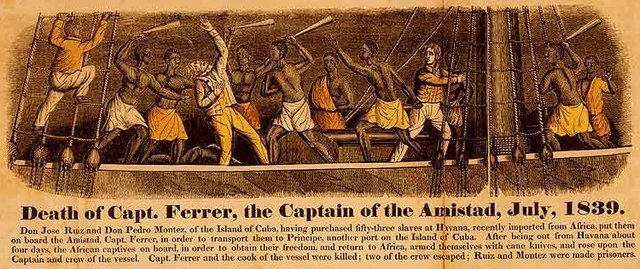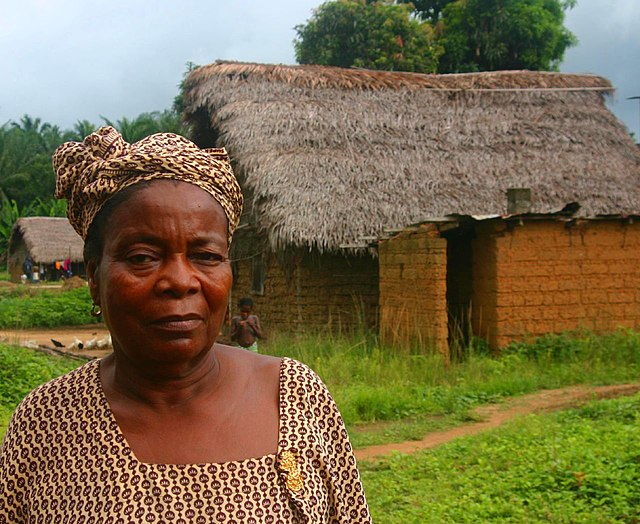La Amistad was a 19th-century two-masted schooner owned by a Spaniard living in Cuba. It became renowned in July 1839 for a slave revolt by Mende captives who had been captured and sold to European slave traders and illegally transported by a Portuguese ship from West Africa to Cuba, in violation of European treaties against the Atlantic slave trade. Spanish plantation owners Don José Ruiz and Don Pedro Montes bought 53 captives in Havana, Cuba, including four children, and were transporting them on the ship to their plantations near Puerto Príncipe. The revolt began after the schooner's cook jokingly told the slaves that they were to be "killed, salted, and cooked." Sengbe Pieh unshackled himself and the others on the third day and started the revolt. They took control of the ship, killing the captain and the cook. Three Africans were also killed in the melee.
La Amistad off Culloden Point, Long Island, New York on August 26, 1839 (contemporary painting, artist unknown)
Freedom Schooner Amistad at Mystic Seaport in 2010
1840 engraving depicting the Amistad revolt
A print of Cinqué that appeared in The Sun on August 31, 1839
The Mende are one of the two largest ethnic groups in Sierra Leone; their neighbours, the Temne people, constitute the largest ethnic group at 35.5% of the total population, which is slightly larger than the Mende at 31.2%. The Mende are predominantly found in the Southern Province and the Eastern Province. The Mende are mostly farmers and hunters. Some of the major cities with significant Mende populations include Bo, Kenema, Kailahun, and Moyamba.
Mende musicians in 1936
Boys returning from their initiation in the Poro, 1936. Photo by Sjoerd Hofstra
Mende women with a masked Sande society leader.
A Mende woman in the village of Njama quee in Moyamba District.








